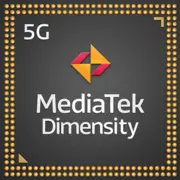MediaTek Helio X25

MediaTek Helio X25: An Overview of an Outdated Yet Relevant Processor for Budget Smartphones
April 2025
Introduction
The MediaTek Helio X25 is a deca-core processor released in 2016 that is still found in some budget smartphones. Despite its age, it remains an interesting option for users who do not require maximum performance. In this article, we'll explore who this SoC is suitable for, its strengths and weaknesses, and what to pay attention to when purchasing a device based on it.
1. Architecture and Process Technology: How Helio X25 Works
Three Clusters, Ten Cores
The Helio X25 is built on a unique Tri-Cluster architecture that divides cores into three groups:
- 2 ARM Cortex-A72 cores running at 2.5 GHz for heavy tasks (gaming, rendering).
- 4 ARM Cortex-A53 cores at 2.0 GHz for background processes (social media, messaging).
- 4 ARM Cortex-A53 cores at 1.55 GHz for energy efficiency (basic operations like music playback).
This scheme (HMP — Heterogeneous Multi-Processing) allowed for flexible task allocation, reducing power consumption. However, in 2025, this architecture appears outdated: modern chips use larger cores (Cortex-X/A7xx) and advanced process technologies.
Process Technology: 20 nm — A Disadvantage for Energy Efficiency
The Helio X25 is manufactured using 20nm technology, which is considered outdated in 2025. In comparison, new budget processors (like the MediaTek Dimensity 6100+) use 6nm processes, resulting in lower heat output and greater battery life.
GPU: Mali-T880 MP4
The Mali-T880 MP4 GPU with 4 cores supports the Vulkan and OpenGL ES 3.2 APIs. In 2016, it was capable of handling games like Asphalt 8, but today, even Genshin Impact on minimum settings will run at a frame rate below 30 FPS.
2. Performance in Real-World Tasks
Gaming
- Light Projects (Candy Crush, Clash of Clans) — runs without issues.
- Medium Load (PUBG Mobile on low settings) — frame drops to 25-30 FPS are possible.
- Heavy Games (Honkai: Star Rail, Call of Duty: Mobile) — require lowering resolution and graphics.
Multimedia
- Support for 2K displays (though in 2025, smartphones with X25 typically come with 1080p screens).
- Video encoding/decoding: H.265/HEVC up to 4K@30 fps.
Artificial Intelligence
There is no dedicated NPU in the chip; AI tasks (photo processing, voice assistants) are handled via the CPU/GPU, leading to increased power consumption.
Power Consumption and Heating
Due to the 20nm process and active use of the A72 cores, the chip tends to overheat. In smartphones without cooling systems, throttling (frequency reduction) may occur after 10-15 minutes of gaming.
3. Built-in Modules: Connectivity and Communication
- Modem: 4G LTE Cat.6 (maximum speed — 300 Mbps on the download). No support for 5G, which is a significant drawback in 2025.
- Wi-Fi: 802.11ac (Wi-Fi 5) with a maximum of 433 Mbps. No support for Wi-Fi 6/6E.
- Bluetooth: 4.2 (lacks LE Audio and other modern features).
- Navigation: GPS, GLONASS, but without BeiDou or Galileo.
4. Comparison with Competitors
Contemporaries (2016-2017):
- Snapdragon 820 (4 cores) — excelled in single-core performance (Geekbench 6 Single Core ~350), but lagged in multi-threading.
- Exynos 8890 — better optimized for gaming (Mali-T880 MP12 vs. MP4 for MediaTek).
Budget Chips of 2025:
- MediaTek Dimensity 6100+ (6 nm, 5G, Mali-G57 MC2) — offers twice the gaming performance.
- Snapdragon 4 Gen 3 (5G, 6 nm) — more energy-efficient and runs cooler.
5. Usage Scenarios
Gaming
Only suitable for casual games. Streaming (GeForce Now, Xbox Cloud) requires a stable Wi-Fi 5 connection.
Daily Tasks
- Social media, browsing, HD video — runs smoothly.
- Multitasking (simultaneous operation of 5-7 apps) — feasible with 4-6 GB of RAM.
Photo and Video
- Maximum camera support: up to 32 MP (single camera) or 16+16 MP (dual).
- Video recording: 4K@30 fps, but lacks EIS 3.0 stabilization.
6. Pros and Cons
Pros:
- Low cost of devices ($150-250).
- Support for 2K displays (relevant for budget models with good screens).
Cons:
- No 5G support.
- High power consumption.
- Weak graphics for modern games.
7. Practical Tips for Choosing a Smartphone
- Cooling: Look for models with copper pipes or graphite coatings.
- RAM: At least 4 GB (preferably 6 GB for Android 14+).
- Screen: IPS or AMOLED with a refresh rate of 60-90 Hz (although the chip itself does not support 90+ Hz).
- Battery: At least 4500 mAh to compensate for high power consumption.
Typical Devices:
- Budget smartphones (Xiaomi Redmi Note 5A Pro, Meizu MX6 2025 Edition).
- Devices for emerging markets (India, Africa).
8. Final Conclusion: Who is the Helio X25 For?
This processor is suitable for:
1. Budget users who need a smartphone for calls, social media, and occasional gaming.
2. Secondary devices (for children or as a backup gadget).
3. Enthusiasts of custom ROMs (the chip is popular among enthusiasts due to community support).
Main Advantages:
- Price below $200.
- Sufficient performance for basic tasks.
However, if you plan to use the smartphone for 3-4 years, it's better to choose a device with 5G and a modern chip (like those on Snapdragon 4 Gen 3 or Dimensity 6100+).
Conclusion
The MediaTek Helio X25 in 2025 is an example of a "living legend." Despite its age, it continues to exist in the budget segment, reminding us that not everyone needs top-notch specifications. However, when choosing such a smartphone, it's crucial to realistically assess its limitations.
Basic
GPU Specifications
Memory Specifications
Benchmarks
Compared to Other SoC
Share in social media
Or Link To Us
<a href="https://cputronic.com/soc/mediatek-helio-x25" target="_blank">MediaTek Helio X25</a>